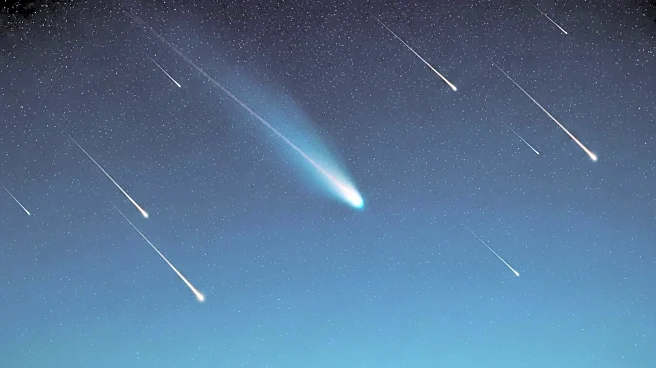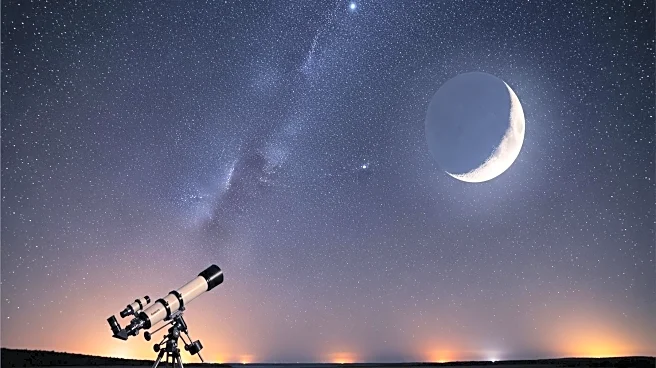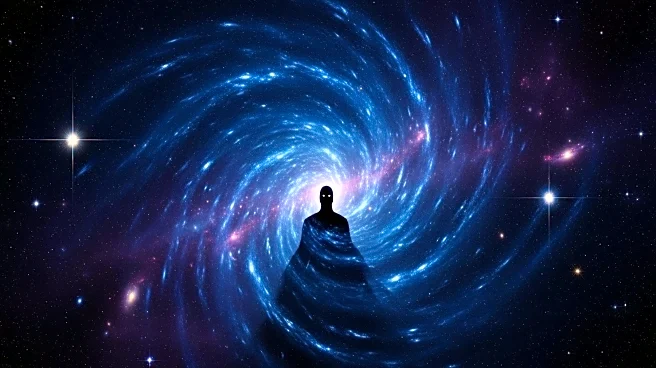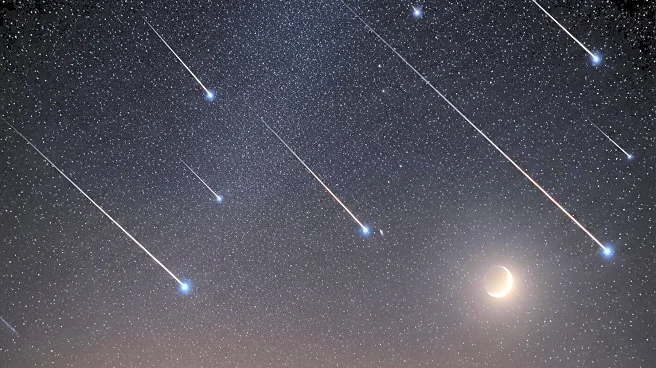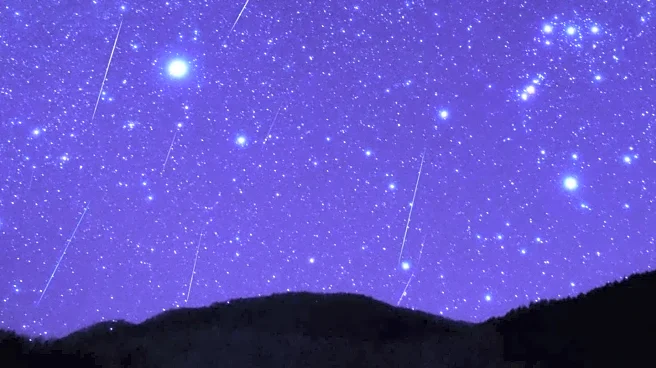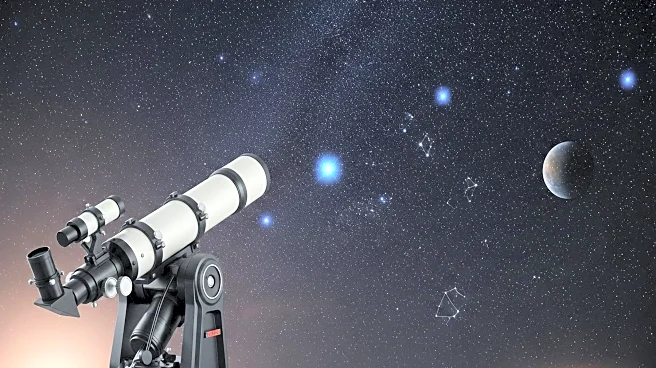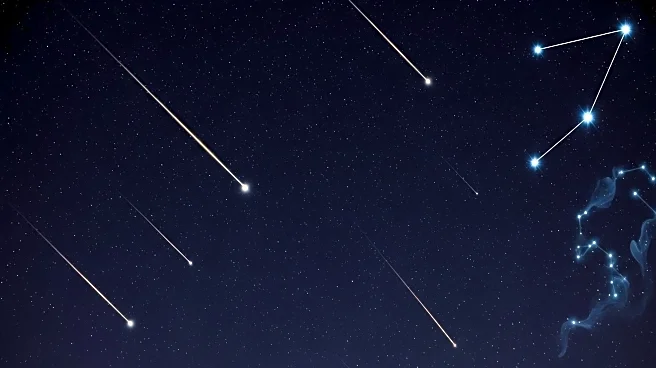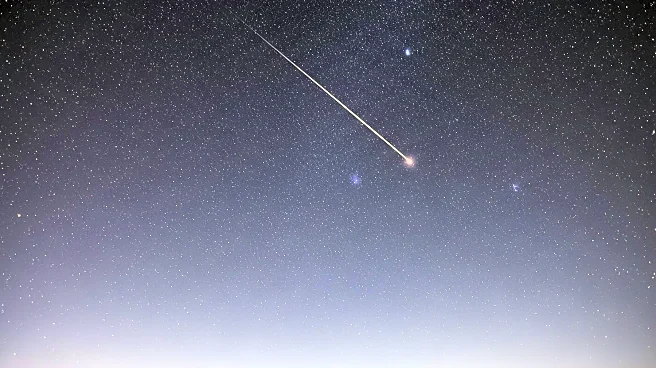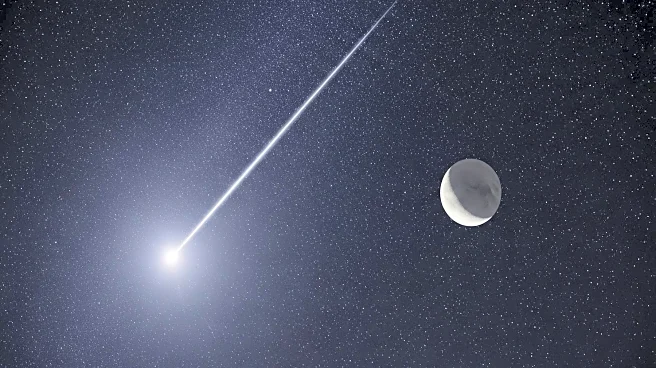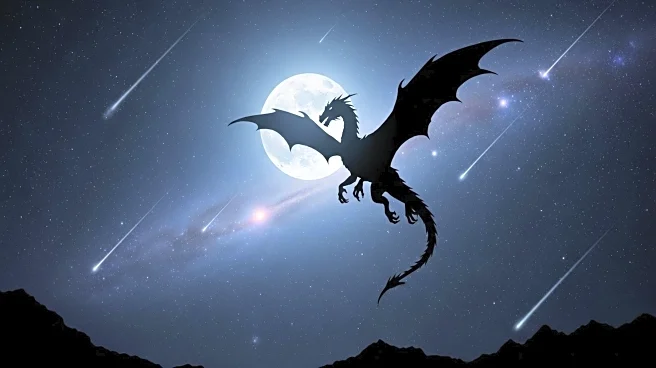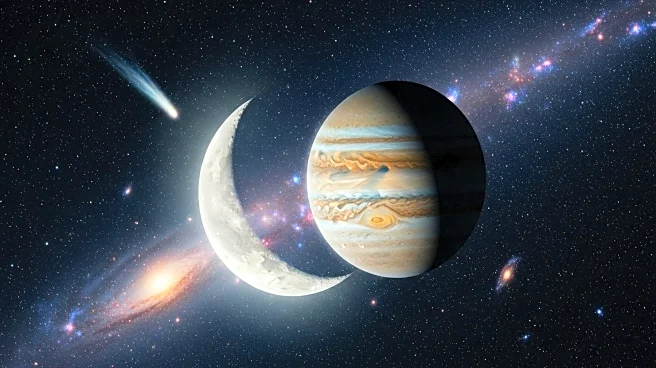What's Happening?
Astronomers are drawing attention to the upcoming Orionid meteor shower, which peaks on the morning of October 21. This annual event occurs as Earth passes through debris from Halley's Comet, producing meteors visible from early October to early November. The meteors appear to originate from the constellation Orion, near the star Betelgeuse. Additionally, Comet Lemmon (C/2025 A6) is expected to be one of the brightest comets of the year, visible near the star Cor Caroli in the northeastern sky. Comet Lemmon will be closest to Earth on October 21, offering a prime viewing opportunity. Observers are encouraged to look for these celestial events in the night sky, with specific guidance provided on the positioning of stars and planets throughout the week.
Why It's Important?
The Orionid meteor shower and Comet Lemmon provide unique opportunities for both amateur and professional astronomers to observe and study celestial phenomena. Meteor showers like the Orionids offer insights into the composition and behavior of cometary debris, while the visibility of Comet Lemmon allows for direct observation of cometary activity. These events can inspire public interest in astronomy and science, potentially influencing educational initiatives and fostering a greater appreciation for space exploration. The visibility of these phenomena also underscores the dynamic nature of our solar system and the ongoing interactions between celestial bodies.
What's Next?
As the peak of the Orionid meteor shower approaches, astronomers and enthusiasts will continue to monitor the skies for optimal viewing conditions. Comet Lemmon's proximity to Earth on October 21 will likely attract increased attention from both the scientific community and the general public. Observatories and space agencies may conduct further studies to analyze the comet's composition and trajectory. Public outreach efforts, including educational programs and stargazing events, may be organized to engage communities and promote interest in astronomy.
Beyond the Headlines
The observation of meteor showers and comets can have broader implications for understanding the history and evolution of our solar system. Studying these phenomena contributes to our knowledge of cometary origins and the processes that shape planetary systems. Additionally, these events highlight the importance of preserving dark skies for astronomical observation, raising awareness about light pollution and its impact on scientific research. The cultural significance of celestial events, often tied to historical and mythological narratives, can also enrich public engagement with astronomy.
